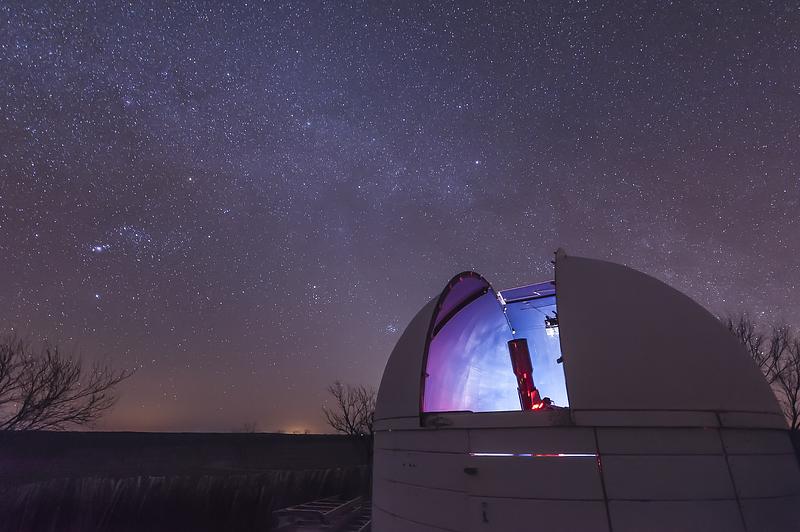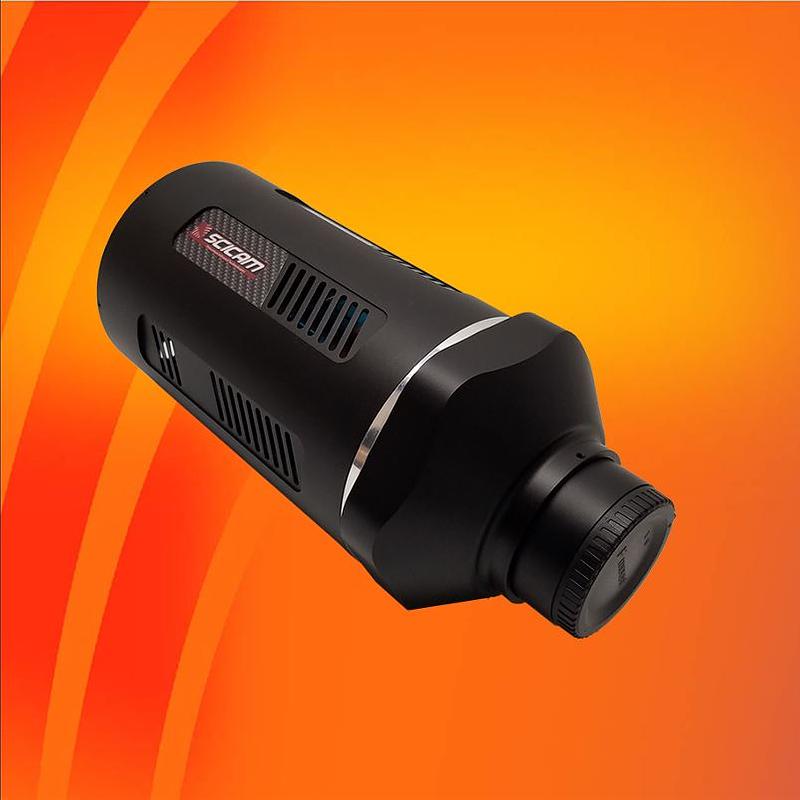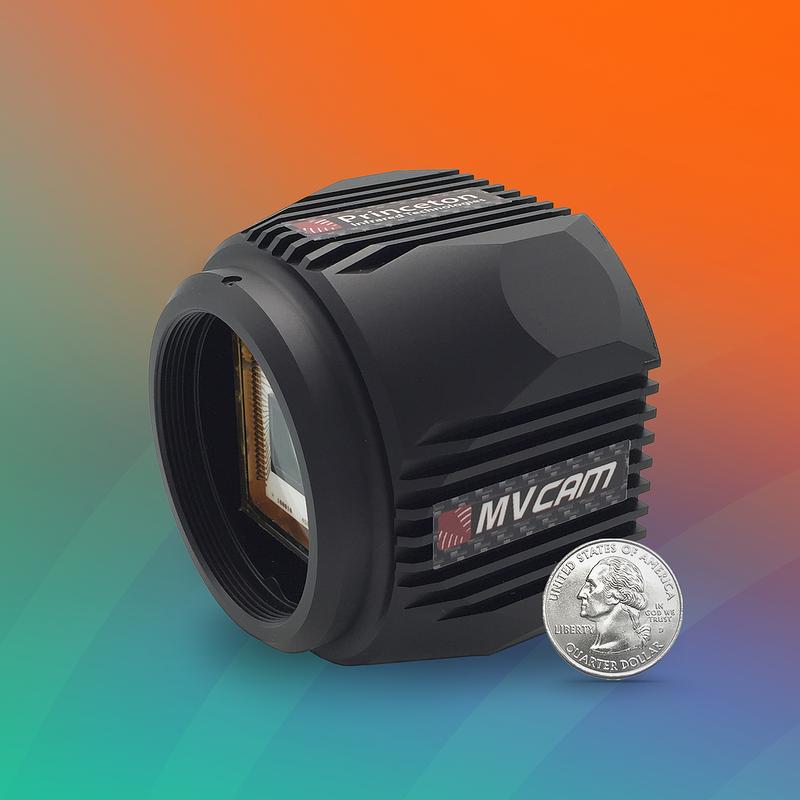Astronomy and Telescopes Using SWIR Cameras
Princeton Infrared Technologies, Inc. manufactures its shortwave infrared (SWIR) cameras from lattice-matched InGaAs, so they are the most-practical and most-sensitive detectors available for seeing thru the atmospheric transmission windows known as the J- and H- bands. These are bands centered at the wavelengths 1220 and 1630 nm (1.22 & 1.63 µm), respectively. Our InGaAs photodiodes utilize a thin cap and optimized anti-reflection coatings to capture the whole wavelength span from 400 to 1680 nm. Thus, one sensor and optical path is used to capture visible, NIR and SWIR wavelengths. This adds imaging in the R and I astronomical bands to the telescope’s mission.one optical path is vital to accurately co-registering the features and chemistries of planets, stars, nebula, and galaxies in the heavens.
Imaging through the sky in the NIR-SWIR bands is important because of reduced scattering and because of molecular absorption. Reduced scattering at longer wavelengths penetrates obscurants such as atmospheric turbulence and space dust, permitting seeing deeper in the universe. Molecules and their movements produce strong absorbances in the SWIR wavelengths, which occur when photon energies match natural vibration frequencies of the molecules. This creates identifiable spectral signatures. Though the fundamental molecular vibrations are also detected with MWIR or LWIR cameras, it is easier and far less expensive to use NIR-SWIR imagers.
The Princeton Infrared Technologies, Inc. megapixel 1280SciCam SWIR camera provides astronomers the sensitivity, even wavelength response and the linearity they need to uncover the deepest secrets of the universe while being significantly less expensive than typical HgCdTe arrays. Its wide intra-scenic dynamic range is ideal for discerning small variations in absorbance during the search for water on distant solar systems or while analyzing the gas composition of exoplanets. The cooled sensor supports capturing the dimmest light sources with up to 2 minutes of integration time when needed, without introducing vibrations that could blur the images since it is cooled using thermoelectric coolers versus mechanical cryo-coolers. For smaller telescopes, when long integration times are not needed, the Princeton Infrared Technologies, Inc. MVCam SWIR camera is low mass and completely vibration free while providing wide dynamic range and reliable linearity.

Read the SPIE Journal article featuring our 1280SciCam SWIR camera here:
 1280SciCam
1280SciCam MVCam
MVCam